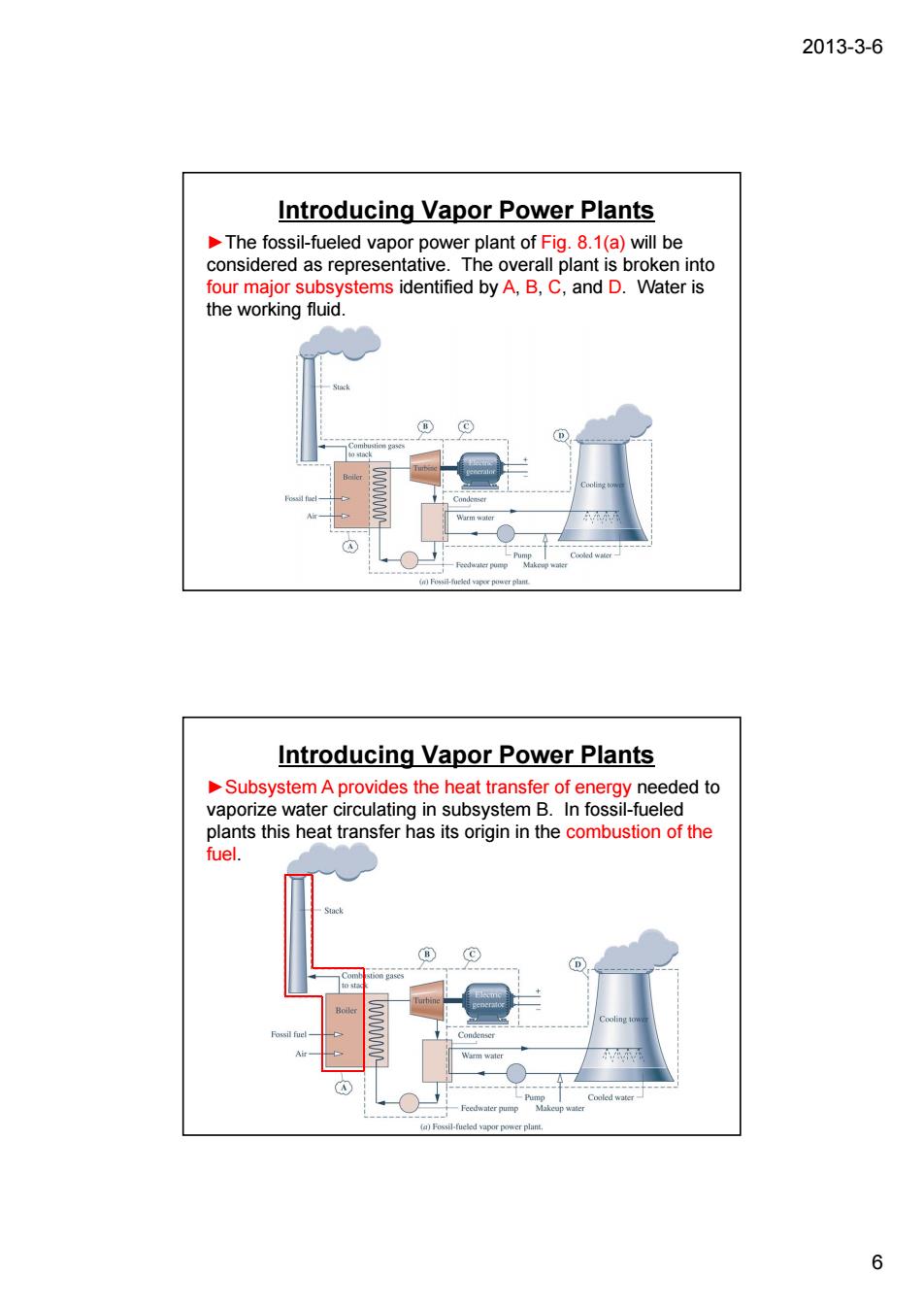
2013-3-6 Introducing Vapor Power Plants The fossil-fueled vapor power plant of Fig.8.1(a)will be considered as representative.The overall plant is broken into four major subsystems identified by A,B,C,and D.Water is the working fluid. Introducing Vapor Power Plants Subsystem A provides the heat transfer of energy needed to vaporize water circulating in subsystem B.In fossil-fueled plants this heat transfer has its origin in the combustion of the fuel. 6
2013-3-6 6 Introducing Vapor Power Plants ►The fossil-fueled vapor power plant of Fig. 8.1(a) will be considered as representative. The overall plant is broken into four major subsystems identified by A, B, C, and D. Water is the working fluid. Introducing Vapor Power Plants ►Subsystem A provides the heat transfer of energy needed to vaporize water circulating in subsystem B. In fossil-fueled plants this heat transfer has its origin in the combustion of the fuel
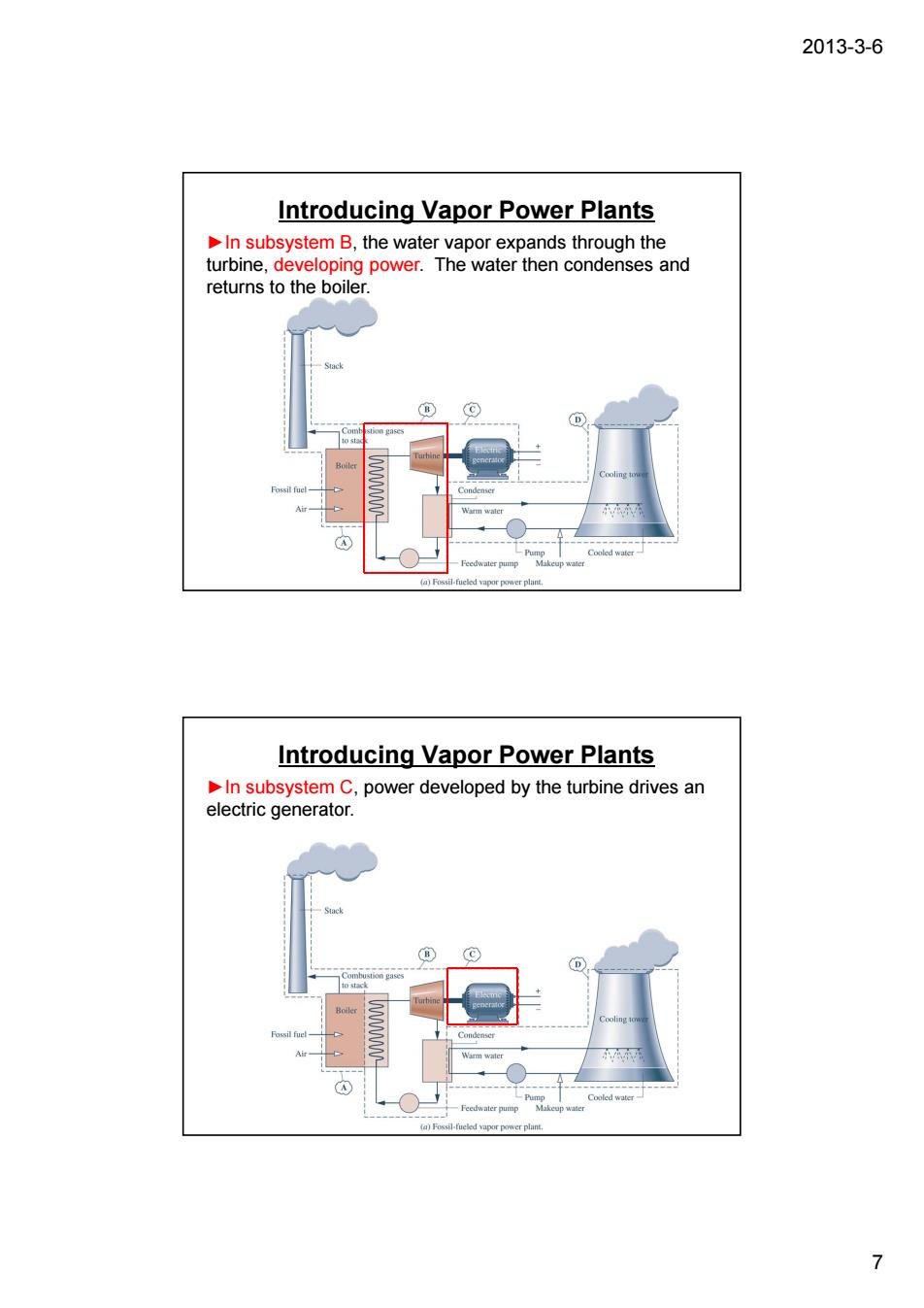
2013-3-6 Introducing Vapor Power Plants In subsystem B,the water vapor expands through the turbine,developing power.The water then condenses and returns to the boiler. Introducing Vapor Power Plants In subsystem C,power developed by the turbine drives an electric generator. 7
2013-3-6 7 Introducing Vapor Power Plants ►In subsystem B, the water vapor expands through the turbine, developing power. The water then condenses and returns to the boiler. Introducing Vapor Power Plants ►In subsystem C, power developed by the turbine drives an electric generator
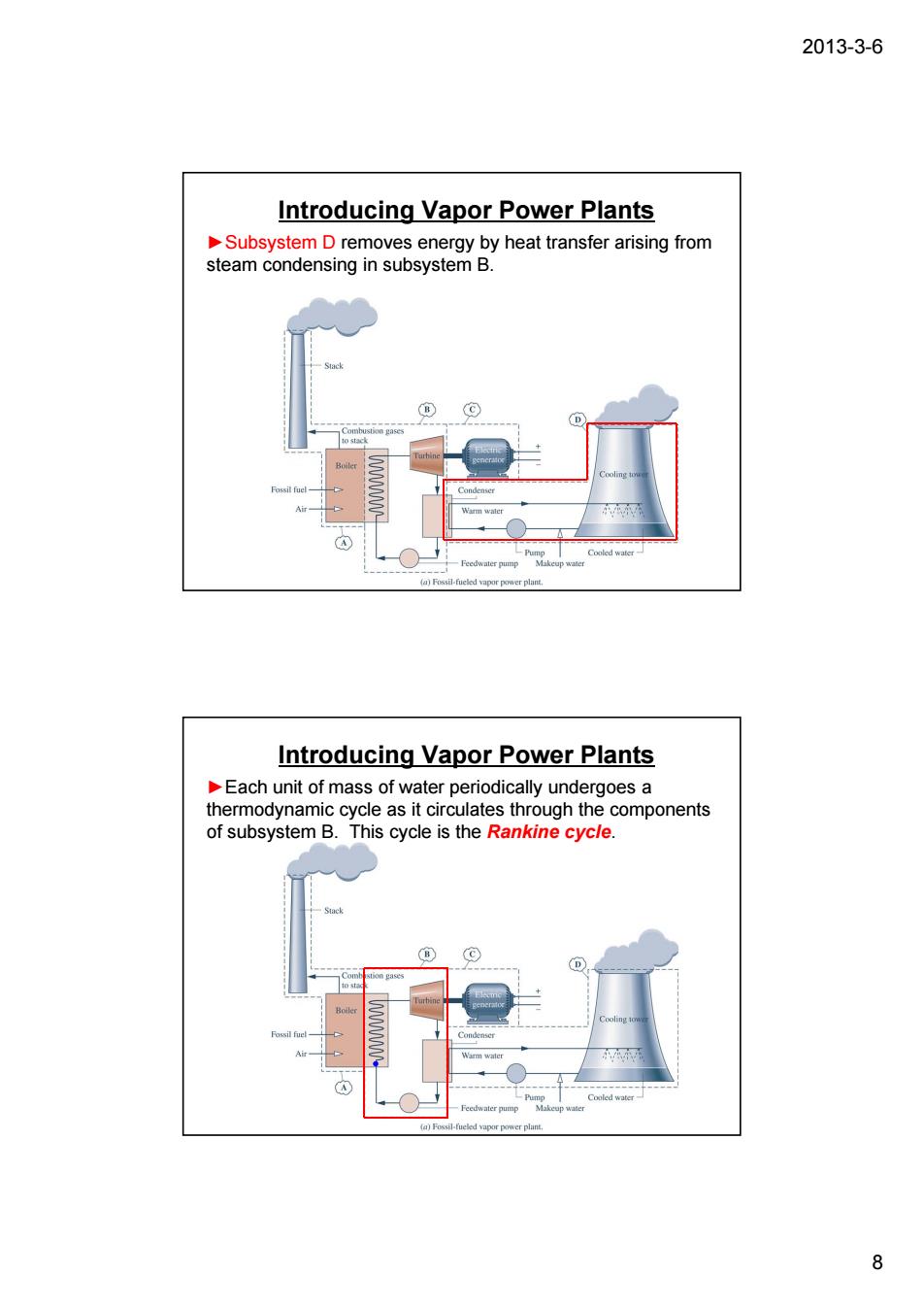
2013-3-6 Introducing Vapor Power Plants Subsystem D removes energy by heat transfer arising from steam condensing in subsystem B. Introducing Vapor Power Plants Each unit of mass of water periodically undergoes a thermodynamic cycle as it circulates through the components of subsystem B.This cycle is the Rankine cycle. 8
2013-3-6 8 Introducing Vapor Power Plants ►Subsystem D removes energy by heat transfer arising from steam condensing in subsystem B. Introducing Vapor Power Plants ►Each unit of mass of water periodically undergoes a thermodynamic cycle as it circulates through the components of subsystem B. This cycle is the Rankine cycle
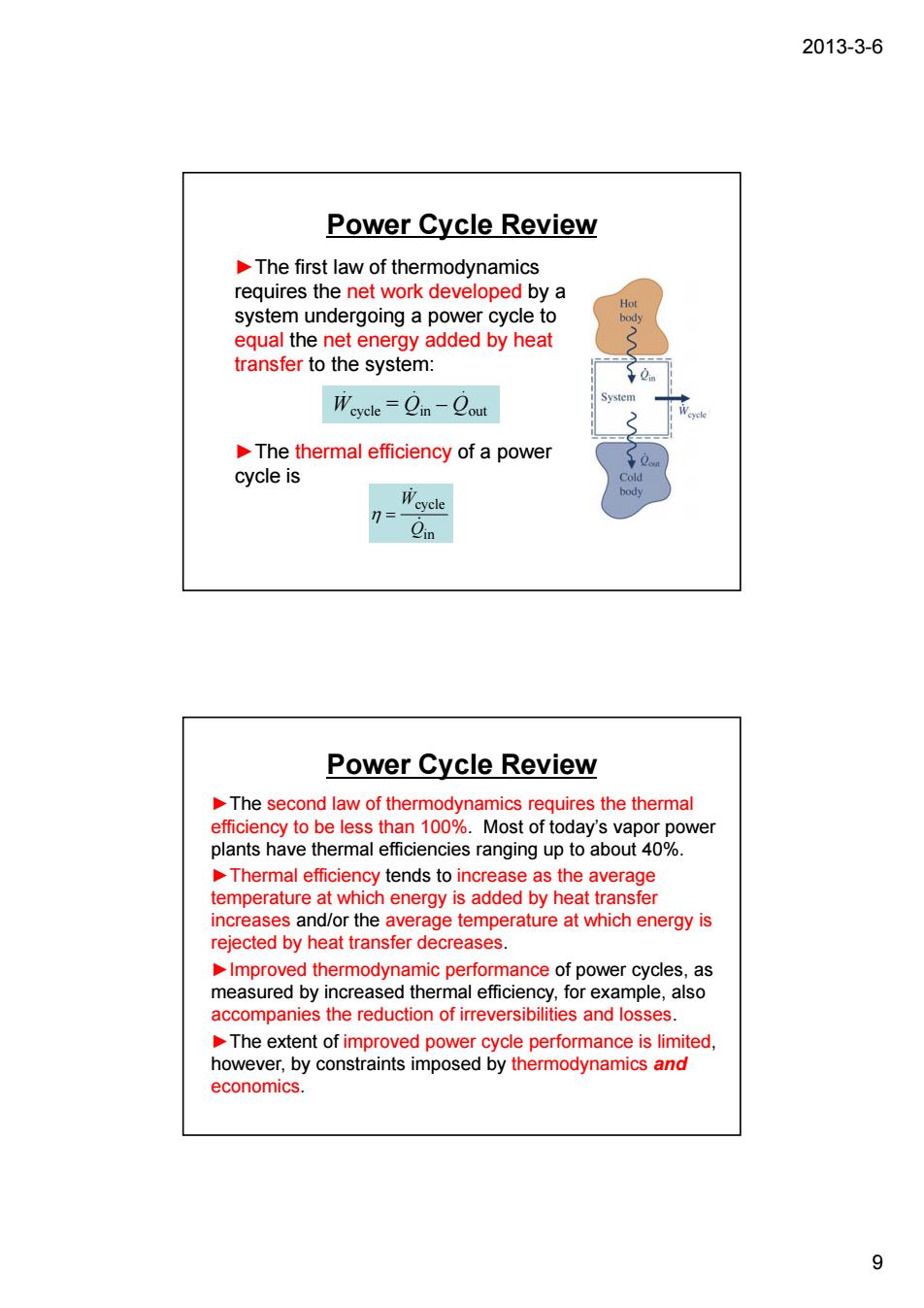
2013-3-6 Power Cycle Review The first law of thermodynamics requires the net work developed by a system undergoing a power cycle to equal the net energy added by heat transfer to the system: Weycle=Om-Cout The thermal efficiency of a power cycle is - Power Cycle Review effic 0 Thermal efficiency tends to increase as the average temperature at which energy is added by heat transfer increases and/or the average temperature at which energy is rejected by heat transfer decreases. The extent of improved power cycle performance is limited, however,by constraints imposed by thermodynamics and economics. 9
2013-3-6 9 Power Cycle Review in cycle Q W & & η = ►The first law of thermodynamics requires the net work developed by a system undergoing a power cycle to equal the net energy added by heat transfer to the system: ►The thermal efficiency of a power cycle is Wcycle = Qin – Qout · · · · · · Power Cycle Review ►The second law of thermodynamics requires the thermal efficiency to be less than 100%. Most of today’s vapor power plants have thermal efficiencies ranging up to about 40%. ►Thermal efficiency tends to increase as the average temperature at which energy is added by heat transfer increases and/or the average temperature at which energy is rejected by heat transfer decreases. ►Improved thermodynamic performance of power cycles, as measured by increased thermal efficiency, for example, also accompanies the reduction of irreversibilities and losses. ►The extent of improved power cycle performance is limited, however, by constraints imposed by thermodynamics and economics
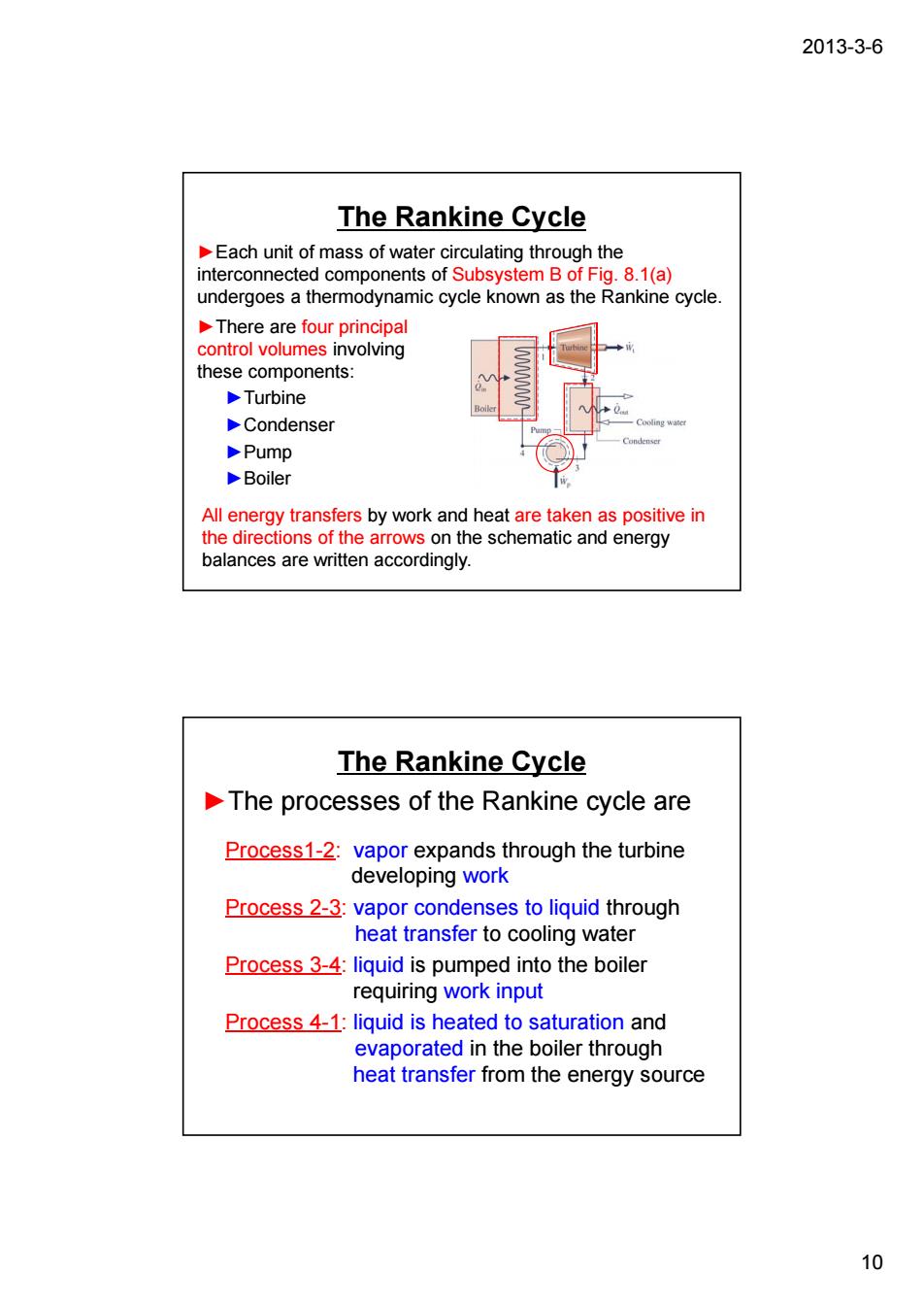
2013-3-6 The Rankine Cycle interconnect comp onents of s Fig.8.1(a) undergoes a thermodynamic cycle known as the Rankine cycle There are four principal control volumes involving these components: Turbine Condenser >Pump Boiler All energy transfers by work and heat are taken as positive in ns of the a s on the schematic and energy written accordingly. The Rankine Cycle The processes of the Rankine cycle are Process1-2:vapor expands through the turbine developing work Process 2-3:vapor condenses to liquid through heat transfer to cooling water Process 3-4:liquid is pumped into the boiler requiring work input Process 4-1:liquid is heated to saturation and evaporated in the boiler through heat transfer from the energy source 10
2013-3-6 10 The Rankine Cycle ►Each unit of mass of water circulating through the interconnected components of Subsystem B of Fig. 8.1(a) undergoes a thermodynamic cycle known as the Rankine cycle. All energy transfers by work and heat are taken as positive in the directions of the arrows on the schematic and energy balances are written accordingly. ►There are four principal control volumes involving these components: ►Turbine ►Condenser ►Pump ►Boiler The Rankine Cycle Process1-2: vapor expands through the turbine developing work Process 2-3: vapor condenses to liquid through heat transfer to cooling water Process 3-4: liquid is pumped into the boiler requiring work input Process 4-1: liquid is heated to saturation and evaporated in the boiler through heat transfer from the energy source ►The processes of the Rankine cycle are